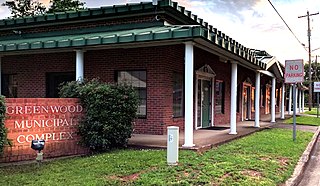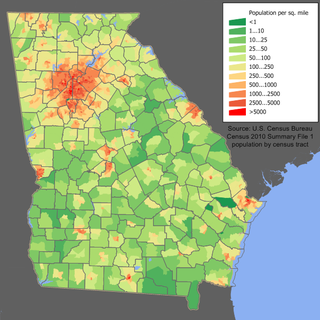Race is a categorization of humans based on shared physical or social qualities into groups generally viewed as distinct within a given society. The term came into common usage during the 16th century, when it was used to refer to groups of various kinds, including those characterized by close kinship relations. By the 17th century, the term began to refer to physical (phenotypical) traits, and then later to national affiliations. Modern science regards race as a social construct, an identity which is assigned based on rules made by society. While partly based on physical similarities within groups, race does not have an inherent physical or biological meaning. The concept of race is foundational to racism, the belief that humans can be divided based on the superiority of one race over another.
Affirmative action refers to a set of policies and practices within a government or organization seeking to benefit marginalized groups. Historically and internationally, support for affirmative action has been justified by the idea that it may help with bridging inequalities in employment and pay, increasing access to education, and promoting diversity, social equity, and social inclusion and redressing alleged wrongs, harms, or hindrances, also called substantive equality.
Racial quotas in employment and education are numerical requirements or quotas for hiring, promoting, admitting and/or graduating members of a particular racial group. Racial quotas are often established as means of diminishing racial discrimination, addressing under-representation and evident racism against those racial groups or, the opposite, against the disadvantaged majority group. Conversely, quotas have also been used historically to promote discrimination against minority groups by limiting access to influential institutions in employment and education.

Greenwood is a suburban town in southern Caddo Parish, which is located in the northwest corner of the U.S. state of Louisiana. With a population of 3,166 at the 2020 United States census, it is the third most populous incorporated municipality in Caddo Parish after Shreveport and Blanchard. Part of the Shreveport-Bossier City metropolitan statistical area, it is located 15 miles west of downtown Shreveport.

Westwego is a city in the U.S. state of Louisiana, located in Jefferson Parish. It is a suburban community of New Orleans in the Greater New Orleans metropolitan area and lies along the west bank of the Mississippi River. The population of the city of Westwego was 8,568 at the 2020 United States census.

Poydras is a census-designated place (CDP) in St. Bernard Parish, Louisiana, United States. The population was 3,886 at the 2000 census and 2,536 in 2020. It is part of the New Orleans–Metairie–Kenner Metropolitan Statistical Area. Poydras is on the East Bank of the Mississippi River, just upriver from the Plaquemines Parish line.

The Great Migration, sometimes known as the Great Northward Migration or the Black Migration, was the movement of six million African Americans out of the rural Southern United States to the urban Northeast, Midwest, and West between 1910 and 1970. It was substantially caused by poor economic and social conditions due to prevalent racial segregation and discrimination in the Southern states where Jim Crow laws were upheld. In particular, continued lynchings motivated a portion of the migrants, as African Americans searched for social reprieve. The historic change brought by the migration was amplified because the migrants, for the most part, moved to the then-largest cities in the United States at a time when those cities had a central cultural, social, political, and economic influence over the United States; there, African Americans established culturally influential communities of their own. According to Isabel Wilkerson, despite the loss of leaving their homes in the South, and the barriers faced by the migrants in their new homes, the migration was an act of individual and collective agency, which changed the course of American history, a "declaration of independence" written by their actions.

The Society of American Archivists is the oldest and largest archivist association in North America, serving the educational and informational needs of more than 5,000 individual archivist and institutional members. Established in 1936, the organization serves upwards of 6,200 individual and member institutions.

In the United States of America, majority-minority area or minority-majority area is a term describing a U.S. state or jurisdiction whose population is composed of less than 50% non-Hispanic whites. It is defined as a population with a collective majority of nationwide minorities, meaning a grouping of racial and ethnic groups that composes over 50% of the territorial population, regardless if one of those minority groups already attains a majority on its own. No single minority is yet the majority in any state, with the closest to that end being Hispanics in New Mexico. As such, all majority-minority states do not have a single ethnic or racial group as the outright majority.

The United Kingdom is an ethnically diverse society. The largest ethnic group in the United Kingdom is White British, followed by Asian British. Ethnicity in the United Kingdom is formally recorded at the national level through a census. The 2011 United Kingdom census recorded a reduced share of White British people in the United Kingdom from the previous 2001 United Kingdom census. Factors that are contributing to the growth of minority populations are varied in nature, including differing birth rates and Immigration.
Covert racism is a form of racial discrimination that is disguised and subtle, rather than public or obvious. Concealed in the fabric of society, covert racism discriminates against individuals through often evasive or seemingly passive methods. Covert, racially biased decisions are often hidden or rationalized with an explanation that society is more willing to accept. These racial biases cause a variety of problems that serve to empower the suppressors while diminishing the rights and powers of the oppressed. Covert racism often works subliminally, and much of the discrimination is done subconsciously.
Henry Cosad Harpending was an American anthropologist, population geneticist, and writer. He was a distinguished professor at the University of Utah, and formerly taught at Penn State and the University of New Mexico. He was a member of the National Academy of Sciences. He is known for the book The 10,000 Year Explosion, which he co-authored with Gregory Cochran.

Georgia is a South Atlantic U.S. state with a population of 10,711,908 according to the 2020 United States census, or just over 3% of the U.S. population. The majority of the state's population is concentrated within Metro Atlanta, although other highly populated regions include: West Central and East Central Georgia; West, Central, and East Georgia; and Coastal Georgia; and their Athens, Columbus, Macon and Warner Robins, Augusta, Savannah, Hinesville, and Brunswick metropolitan statistical areas.
Self-segregation or auto-segregation is the separation of a religious, ethnic, or racial group from other groups in a country by the group itself naturally. This usually results in decreased social interactions between different ethnic, racial or religious groups and can be classed as a form of social exclusion.

Non-Hispanic Whites or Non-Latino Whites are White Americans classified by the United States census as "white" and not Hispanic. According to the United States Census Bureau yearly estimates, as of July 1, 2023, Non-Hispanic whites make up about 58.4% of the U.S. population. The United States Census Bureau defines white to include European Americans, Middle Eastern Americans, and North African Americans. Americans of European ancestry are divided into various ethnic groups. More than half of the white population are German, Irish, English, French and Polish Americans. Many Americans are also the product of other European groups that migrated to parts of the US in the 19th and 20th centuries, as the bulk of immigrants from various countries in Northern, Central, Eastern, and Southeastern Europe, as well as the Caucasus region, migrated to the United States.
The racial and ethnic demographics of the United States have changed dramatically throughout its history.
Anne Harper Charity Hudley is an American linguist who works on language variation in secondary schools. Since 2021, she has been a professor at the Stanford Graduate School of Education.

William Henry Frey is a noted American demographer and author. He is currently a Senior Fellow with Brookings Metro at the Brookings Institution and a Research Professor at the University of Michigan's Population Studies Center. According to Michael Barone, "Frey is widely acknowledged as America’s leading demographer."
A majority-minority or minority-majority area is a term used to refer to a subdivision in which one or more racial, ethnic, and/or religious minorities make up a majority of the local population.
White demographic decline is a decrease in the White populace numerically and or as a percentage of the total population in a city, state, subregion, or nation. It has been recorded in a number of countries and smaller jurisdictions. For example, according to national censuses, White Americans, White Canadians, White Latin Americans, and White people in the United Kingdom are in demographic decline in the United States, Canada, Latin America, and the United Kingdom, respectively. White demographic decline can also be observed in other countries including Australia, New Zealand, South Africa, Germany, Spain, Italy, France and Zimbabwe.










